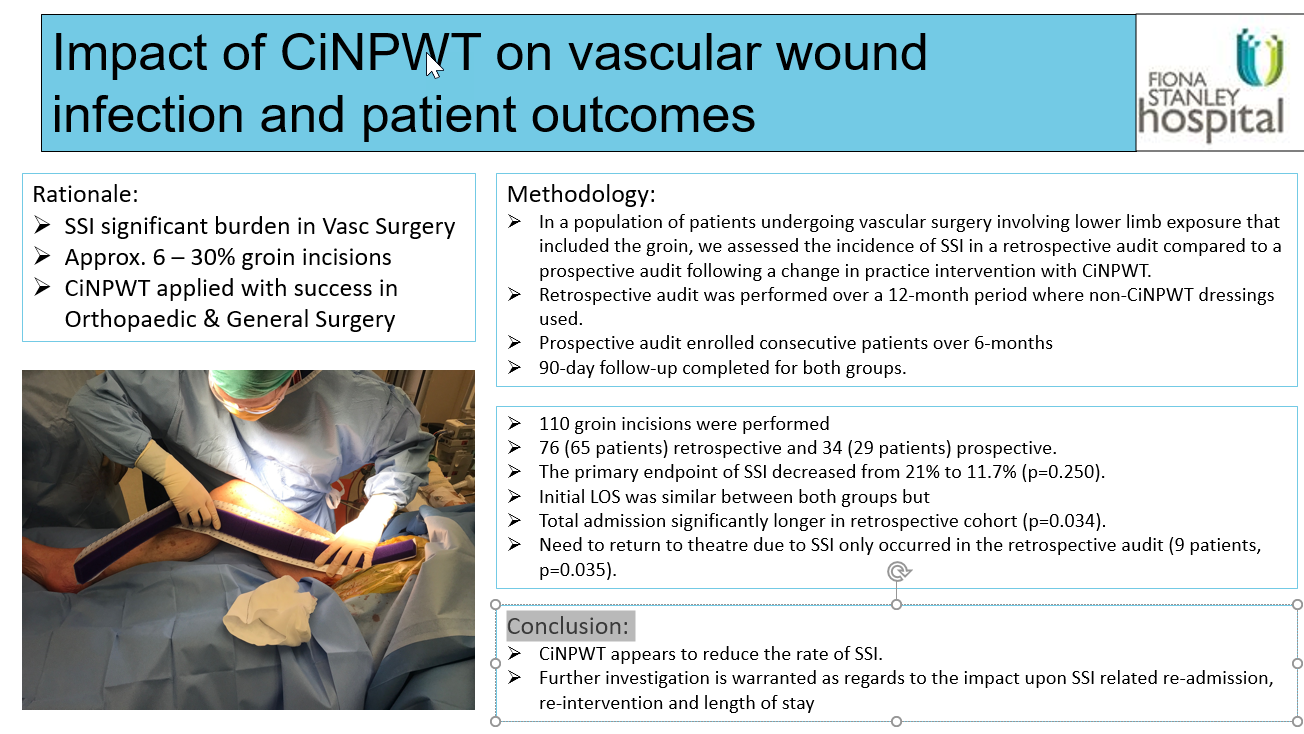Impact of CiNPWT on vascular wound infection and patient outcomes
Investigator: Ian Barry
Rationale:
- Wound infection is a significant burden in Vascular Surgery
- Occurs in approx. 6 – 30% of groin incisions
- CiNPWT applied with success in Orthopaedic and General Surgery
Methodology:
In a population of patients undergoing vascular surgery involving lower limb exposure that included the groin, we assessed the incidence of SSI in a retrospective audit compared to a prospective audit following a change in practice intervention with CiNPWT.
- Retrospective audit was performed over a 12-month period where non-CiNPWT dressings used.
- Prospective audit enrolled consecutive patients over 6-months
- 90-day follow-up completed for both groups.
- 110 groin incisions were performed
- 76 (65 patients) retrospective and 34 (29 patients) prospective.
- The primary endpoint of SSI decreased from 21% to 11.7% (p=0.250).
- Initial LOS was similar between both groups but total admission significantly longer in retrospective cohort (p=0.034).
- Need to return to theatre due to SSI only occurred in the retrospective audit (9 patients, p=0.035).
Conclusion:
CiNPWT appears to reduce the rate of SSI. Further investigation is warranted as regards to the impact upon SSI related re-admission, re-intervention and length of stay
Vascular Wound Infection
In a population of patients undergoing vascular surgery involving lower limb exposure that included the groin, we assessed the incidence of SSI in a retrospective audit compared to a prospective audit following a change in practice intervention with CiNPWT.


